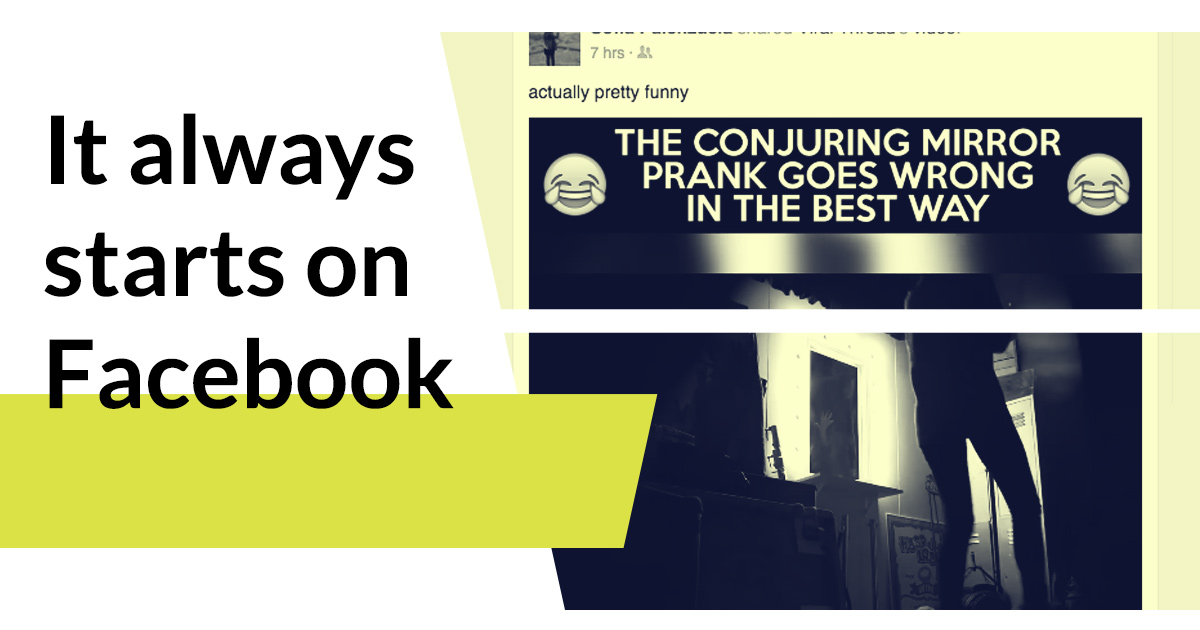15 key takeaways from Social Media Week London
Roughly a 6 minute read by Tom Scott

For those that don’t know, Social Media Week London is an annual event featuring talks, workshops and parties all for the greater good of the industry. It’s a tough job but someone has to attend it! We sent Tom and Georgia down for the final two days, two early trains and a plethora of notes later we’ve crunched some of the main talking points into a list for you. Who doesn’t love a list?
1. Mainstream Media Shouldn’t Chase After “Lad” style content
Sites like Vice, Medium and Buzzfeed to some extent all do an excellent job of producing quality, well researched long form editorial content whilst their position as more “modern” media platforms also allows them to dip their toes in the shareable, viral short form content. The more established traditional media platforms struggle to associate themselves with this as it’s jarring to the user, in all honesty you don’t really look to The Independent or The Guardian for “27 smells that remind you of your childhood” or “Watch what this French Bulldog does next”. The point being made by the panel was that there is still a market for high quality, well researched writing and this should be the focus of media who have made their names and reputations doing just that.
2. "Churnalism not Journalism"
A nice quote from Liam Harrington, one of the founders of UniLad about their business approach.
3. If Gen Y has a short attention span, why do vloggers all have long videos?

An interesting point raised, it’s often said we have a short attention span now, so how have YouTube stars managed to establish such a hardcore following with videos which are often 5 minutes or more? The panel thought the answers lies in the nature of how the media is consumed, Vloggers like Zoella for example are essentially TV shows now, people consume these in bed, in their living rooms etc. So the difference here is that we are still more than happy to make a bigger time commitment to podcasts, vlogs etc. When content is presented unexpectedly you have to fight for the user’s attention span. So there is still the need to think about long form content in digital marketing, done properly a blog or podcast from a brand can have some serious impact.
4. “Younger users don’t care about the brand, they care about who cares about the brand”
Another nice quote from a panel with Tumblr, BBC Worldwide and Lionsgate discussing online advocacy.
5. What is the future of live video?
The future of live video suggests improved technology, multi cameras, drones, filters and more. All of these will improve the overall video quality, also making live video more of a direct threat to mainstream news sources. New platforms have also started trying to get involved, such as Twice, YouNow, Tumblr Live and more. The popularity and appeal of live video is that anyone can broadcast anything in the touch of a button.
6. By 20 seconds 75% of users have stopped watching the video
You might well already know this, but that’s a killer stat, especially when you consider the majority of Twitter and Facebook videos will be watched without sound. So you really have to go some to hook the average user into a video from their timeline/newsfeed.
7. "If you could have a 10% equity in a social platform and receive the share back in 2020, which would it be?"
This brought out some interesting answers; Snapchat, Instant Messaging, and Social Listings. Which would you choose?
8. Twitter is not good for spreading content, it always starts on Facebook

Another interesting fact raised during one of the workshops, the panel were all in complete agreement that it is Facebook and not Twitter that provides the perfect platform for content to spread. Probably important to note that this was in reference to the spread of news content specifically.
9. Snapchat users are 12% more likely to drink alcohol
The Snapchat session with We Are Social, Adidas and Pepsi was enlightening in many ways, but for some reason this statistics stuck out as interesting.
10. Emoji targeting should we be doing it?

There was a big discussion around human emotions and how these can be monitored and used for advertising amongst other things. The panel thought that Twitter’s introductions of Emoji based targeting was innovative and could be the first in many additional advertising functions which look to tap into how the user is feeling. Currently this feature is only available if you run adverts through official Twitter partners, but it could be rolled out more generally soon.
11. Apple owns an AI company which specialises in emotions
To further back this up, Apple’s purchase of Emotient earlier in the year hints at a future for augmented reality adverts and an increasing importance of monitoring emotions online.
12. By 2021 snapchat active users will overtake Facebook
We aren’t sure if this will be realised, but it’s something to chew on for those who doubt Snapchat’s potential in the wake of Instagram Stories launching.
13. Adidas leak their own products

Not ground breaking as a strategy but a company the size of Adidas always struggle with leaked product information, so taking control of this and leaking bits themselves is quite a fun way to approach it.
14. Instant messaging will be the next big thing (if it isn’t already)
One idea mentioned was that Instant Messaging will be the next big thing; brands have yet to conquer this but it’s hugely popular, used very frequently and is a great way to share text and image information. The instant conversations and ease of file sharing is met with an issue of creativity, hence why this platform is yet to be mastered by brands.
15. What are the elements of a successful live video?
There are a handful of key ingredients that will make a live video worth watching; extraordinary scenes, a sense of jeopardy, absurdity, able to convey raw emotion and it must be simple, original and engaging. Not much, right?!
As always if you agree/disagree/have questions then give us a shout on Twitter or Facebook!